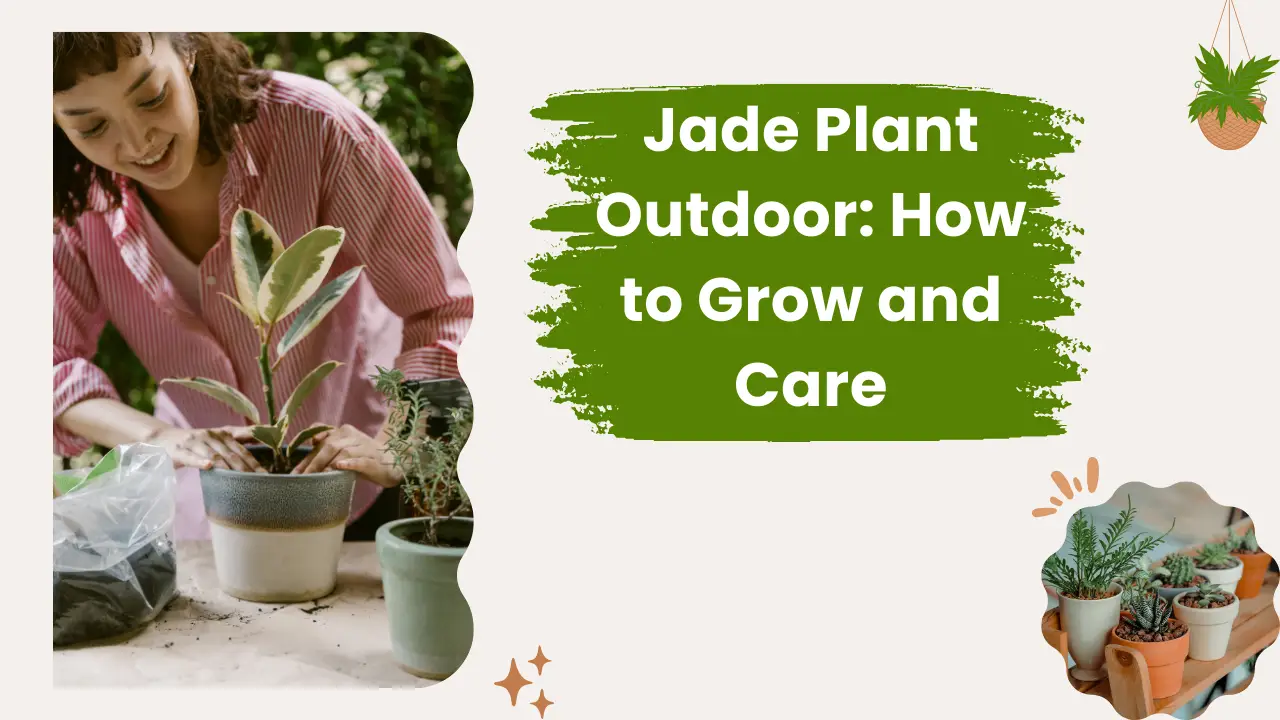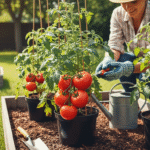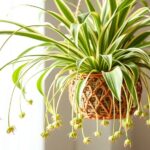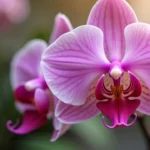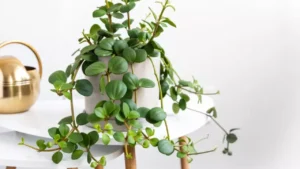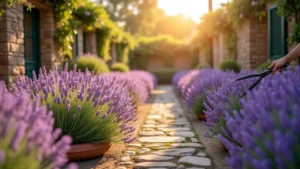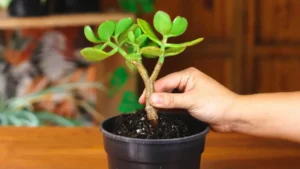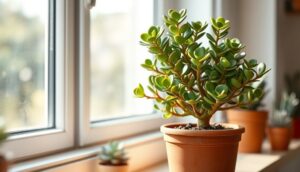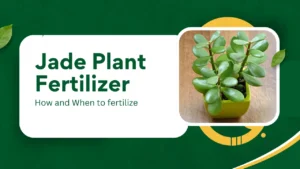Most people who are into gardening are familiar with the jade plant’s popularity as an easy-to-grow and easy-to-care houseplant. However, most people don’t know that you can find that in warm climates growing jade plants outdoors is an excellent option.
The first thought that comes to mind when we think of jade plants, we think of beautiful potted bonsai-like specimens. However, in a lot of parts of California, Arizona, and other warm, arid regions, jade is a popular choice for hedge plants.
Table of Contents
What do we know about the Jade Plant?
The jade plant is popularly known to be a succulent houseplant with fleshy, oval-shaped leaves and thick, woody stems that resemble tiny tree trunks. With just a bit of care, the jade plant can grow to be between 3 and 6 feet tall, but it grows very slowly, growing only about 2 inches a year.
This small beauty, with its round leaves and smooth unique texture, is known to bring luck and symbolizes growth, prosperity, wealth, and positive energy.
Also if you are having a little tiff with your friends, the jade plant might help in the flourishing of your friendship by giving you positive vibes. It’s ok if you don’t know how to properly care for a healthy jade plant because we are here to help you.
How to care for Jade plants?
Like any other plant, you need to know how to care for your jade plants in the best possible manner. Care is of utmost importance when you grow a traditionally indoor plant outdoors. Here is everything you need to know about this.
The lighting of the jade plants
Your jade plant is known for loving light, especially when they are young. When they are in the growth phase, you should expose them to bright, indirect sunlight to help them thrive.
These tough succulents can tolerate deep shade or full direct sun. The best light conditions for your Jade outdoors are in the bright light of the morning sun. Later in the day, give your green friends some protection from the harsh afternoon sun.
During this time, they should receive at least 4 to 6 hours of sunlight daily. Just make sure that the light that they are exposed to shouldn’t fall on them directly or your young plants might get scorched leaves and the leaves of the older plants might get burnt.
The soil of the jade plants
The soil where you put your jade plant or where its roots reside must be extremely careful about what type of soil you are using for your jade plant. In the case of a jade plant, a succulent-specific blend of soil is your best bet.
Ideally, the soil that houses your jade should have a neutral to slightly acidic pH level, and after watering, you should drain it well to prevent excessive moisture from accumulating and causing fungal growth in your plant.
In case your local nursery is out of a succulent-specific blend soil, you can use an all-purpose blend soil by adding some perlite to the mix. Also a piece of advice for the vessel – pick a terracotta or clay vessel to help absorb extra moisture from the soil.
Watering the jade plants
Like all other plants, working on a schedule when watering your plants might be a little harmful in the case of jade plants. During the spring and summer, water your plants often so that their soil is moist but not wet, this can be ensured by using well-drained soil.
Reduce the watering during the winter season to prevent root rot. To keep the soil moist, water from beneath by letting the plant sit in a saucer of water. Also, make sure to tip off any excess water from the pot after letting it stay for a few minutes.
The temperature of the jade plants
Unfortunately, your jade plants can’t thrive in colder climates (below USDA zone 8). However, if you are a resident of a warm, dry area (USDA zones 10+), jade plants tend to grow perfectly fine.
Jade plants are known to have an optimal growing temperature between 65-70° Fahrenheit, and if the temperatures drop below 50° Fahrenheit, it is time you bring the plant indoors.
Jade plants are resilient but one thing they can’t do is withstand frost or cold damage. So, be responsible jade owners, and don’t forget about your jade plants in the wintertime!
If you live in a place where it rains way too often, jade plants might not be the best outdoor plant. Since they are native to desert-like regions, they are known to like dry conditions best.
They thrive well on very little water and instead store water in their plump leaves for future use. Too much exposure to rainfall will cause root rot, fungal growth, or even the death of your tiny green friend.
Jade plants are known to survive winter outside but you need to keep an eye on them to see if they are doing well.
They can survive at a temperature level below 40°F. This is what makes them a perfect plant to be kept outside your home during early winter when almost all houseplants are not able to tolerate such conditions.
But any temperature below that, or keeping them in such conditions, and exposed to frost, for a very long time will affect their growth and development. Therefore, it is better to bring them indoors in a regulated environment when the temperature conditions are such.
Fertilizing the jade plants
A common mistake that most of us make about jades is underfeeding our succulents, especially during the growing season. For the best possible results, feed your jade plant a controlled-release fertilizer at the beginning of the season or weekly with a weak liquid solution.
Also, make sure that the fertilizer you use is a balanced mix in 20-20-20 at one-quarter strength on mature plants and one with lower nitrogen concentration for younger plants.
Do jade plants do well outside?
Jade plants are known to do well outside if they are taken care of and are provided with a balanced living environment is provided. The care requirements of a jade plant will change when they are kept outdoors, and a plant owner needs to make the right readjustments.
You should know that before the plant enthusiasts decided to bring the jade plant indoors, it used to be native to your outdoor gardens. It is because of this exposure to outdoor conditions that help them survive the outdoors, even with limited care.
After moving indoors, these outdoor beauties are now acclimated to limited conditions and timely care.
This is why we need to take it slow with moving the jade plant outdoors to allow it to acclimate to the new environment without getting shocked.
Some factors tend to play a crucial role when it comes to the health of the plant. These are light, temperature, and other cultural conditions. Unfortunately, being natural determinants, these conditions are not in our control, so it is essential to keep your plant in a well-protected place.
Something that needs to be cared about is whether the temperature levels are extremely low or high, you need to keep your plant indoors. Else, it can cause permanent harm to your plant.
You can keep your jade plant outside, but make sure you are not keeping them in harsh direct sun, or the leaves will get scorched.
It is for the best that you keep moving them if you see any sign of distress. They are known to behave well if kept in ideal conditions outdoors, as they are resilient to minor changes in living conditions.
How to move the indoor jade plant outdoors?
It is best when preparing your jade plants slowly to go outdoors in a very controlled condition. Therefore, there are a certain set of steps your need to follow before deciding to shift your jade plant outdoors in hot air from their cozy, comfortable location indoors.
- Look for a shaded area, be it under a tree or on your patio. You can start by keeping your jade plant outdoors for a few hours daily, and move them back in sometime.
- You can increase the duration you keep your plants outdoors by a few hours every day.
- After about 5-7 days, you can start by exposing your jade plant to the morning sun for an hour or two. The rest of the time, make sure you keep the plant under shade.
- Repeat putting them the same way for about another week. When this happens, your plant is well adapted to the outside conditions to remain the entire day and night.
- Keeping a thorough check on the following evening is essential to check for any signs of stress. If you think they seem alright, your plant is ready to stay in the outdoor setting.
- Make sure you don’t expose them to direct harsh sun and also start watering them more frequently. Do a finger test on the soil before watering them.
- When kept outdoors, there is a higher chance of pest infestation, so keep examining your plant every few days. You can use neem oil spray as a protective measure for your green friends.
- You should fertilize them once every month in the entire growing season to boost their growth and fulfill their nutrient needs.
- Make sure that your plant is not stressed as a result of drafts. Please keep your plants in a protected area away from hot and cold drafts.
Conclusion
Jade plants are a very universal sort variety of plants for they, as we now know, work both indoors and outdoors and can help enlighten both your homes and gardens. With so many varieties to choose from, there must remain no doubt about the fact that jade plants are for everyone!
Be it your outdoor gardens or indoor decor, from large plants to small, there are a plethora of options for all of us.
FAQs
Q1. When should I fertilize my jade plant?
A good feeding schedule for your succulents is to give them fertilizer at six-month intervals during their main growth period. Avoid feeding your jade plant during the winter months of dormancy.
Q2. How long can Jades survive the outdoors?
Jade plants are not frosted tolerant, so if you keep yours outdoors during the summer, be sure to bring them inside once temperatures begin to fall to around 50°F (10°C) during the autumn times.
Q3. Recommended outdoor plants?
There are many varieties of jade plants available, from the standard, green-leafed jade to several variegated varieties. Here are a few interesting outdoor jades to keep an eye out for:
Crassula Ovata tends to make a great addition to your garden and is very resilient.
Silver Dollar Jade plant is normally a sun-loving variety of jade, it surprisingly bears flowers mostly during the winter season.
The Weeping Jade plant is a great addition to your garden as it brings in bright orange-colored flowers as it blooms.

